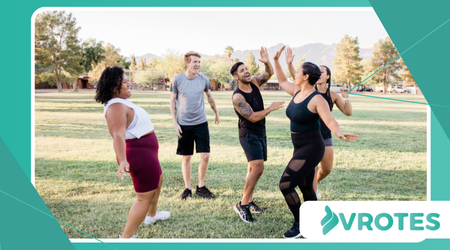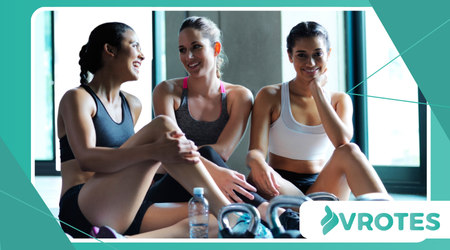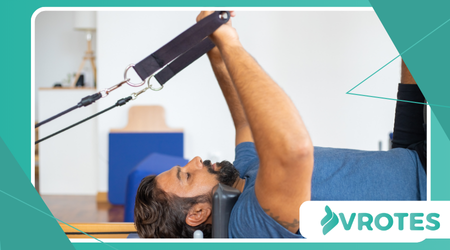Why High-Impact Exercise Isn’t Always Off-Limits in Midlife

High-Impact Exercise Isn’t Always Off-Limits in Midlife. When you hit your 40s, a chorus of “slow down” seems to get louder.
Anúncios
Friends, and even some fitness pros, start whispering about low-impact routines. The assumption is that high-impact workouts are too risky for aging joints.
But what if that’s a myth, or at least a misconception?
The truth is, for many, the phrase High-Impact Exercise Isn’t Always Off-Limits in Midlife holds true, and embracing it can be the key to a stronger, more vibrant second half of life.
Beyond the Knee-Jerk Reaction
It’s easy to understand the fear. We’ve all seen or experienced the wear and tear of time.
Anúncios
Joint pain, creaky knees, and the general feeling that things just don’t bounce back like they used to.
This leads many to abandon high-impact activities like running, jumping, and plyometrics altogether.
They swap their sneakers for a stationary bike, believing it’s the only way to stay safe.
While low-impact options are fantastic, this wholesale abandonment can be a disservice to your body. Your skeletal system, in particular, thrives on a certain level of stress.
The human body is incredibly adaptable. We’re not fragile glass sculptures. Instead, think of a sculptor working with a block of clay.
With the right pressure and consistent effort, the clay becomes a masterpiece. Similarly, the right kind of impact, applied progressively, strengthens bones and connective tissues.
Avoiding all impact, in fact, can lead to a loss of bone density.
The National Osteoporosis Foundation highlights that jumping and plyometrics are key for building bone mass, which is critical as we age.
The Myth of “Too Old”
The notion that high-impact exercise is a young person’s game is fundamentally flawed. It’s not about age; it’s about preparation and conditioning.
A 45-year-old with a consistent strength training routine and good movement patterns is often better equipped for high-impact activity than a sedentary 25-year-old.
Read more: Menopause and Fascia Health: Stretching Beyond Flexibility
The key is to build a solid foundation. You wouldn’t build a skyscraper on a flimsy base, so why expect your body to handle stress without a strong support system?
Building this foundation involves a multi-faceted approach. It requires a balanced combination of strength training, mobility work, and proper form.
For example, a runner in their 50s who incorporates squats, lunges, and glute-strengthening exercises into their routine is far less likely to suffer an injury than one who just logs miles without any supplemental work.
It’s the difference between a high-performance sports car with a well-maintained engine and one that’s been sitting in a garage for years.

A Measured Approach: Smart Impact is Key
This isn’t a free pass to suddenly start jumping box jumps from a standstill. It’s a call for a measured, intelligent approach.
See how interesting: Why “Toxic Positivity” Can Delay Healing Mental
The strategy should be about smart progression, not reckless abandon.
Listen to your body and understand the difference between discomfort and pain. Here’s a simple framework to consider:
| Parameter | Low Impact (Starting Point) | Moderate Impact | High-Impact (Goal) |
| Activity Example | Brisk Walking, Cycling, Swimming | Power Walking, Hiking, Light Jogging | Running, Jumping Jacks, Box Jumps |
| Joint Stress | Minimal | Low to Moderate | Moderate to High |
| Primary Goal | Cardiovascular Health, Joint Mobility | Cardiovascular & Bone Health | Bone Density, Power & Speed |
| Typical Frequency | Daily | 3-5 times/week | 1-3 times/week |
As the table shows, there’s a clear path from low to high-impact. You don’t jump from zero to 100. You build up your tolerance gradually.
The Case for Continued Impact
Maintaining High-Impact Exercise Isn’t Always Off-Limits in Midlife offers significant benefits beyond just bone health.
It enhances muscle power and elasticity, crucial for preventing falls. It also improves cardiovascular fitness more efficiently than some low-impact activities.
++ Why Forest Bathing Alters Immune Cell Activity
Plus, the mental health benefits are immense. The feeling of accomplishment after a challenging run or a plyometric workout can be a huge confidence booster.
Consider someone like Jane, a 52-year-old who runs 5Ks and practices martial arts.
She didn’t start there. A decade ago, she was a casual walker. She slowly integrated light jogging, then running, while also prioritizing strength training to support her joints.
Her dedication to a phased approach allowed her to not only continue but to thrive. Now, her bone density is far better than her peers who quit impacting activities.
Her success story is a testament to the power of smart, consistent effort.

Redefining Your Relationship with Fitness
Midlife doesn’t have to be a slow decline into sedentary living. It can be a period of reinvention and a return to the activities you love, or the discovery of new ones.
It’s about building a body that supports your passions, whether that’s playing with your grandchildren, hiking a mountain trail, or even training for a marathon.
The idea that High-Impact Exercise Isn’t Always Off-Limits in Midlife challenges us to be more proactive about our health.
For many, giving up high-impact activities is a choice based on fear rather than a physical necessity. This is a chance to rewrite that narrative.
We are more resilient than we think. By focusing on smart training and listening to our bodies, we can safely enjoy a broad range of physical activities for decades to come.
Don’t let a number on a birthday cake dictate your physical limits.
Ultimately, the choice is personal. But wouldn’t it be a shame to assume your body can’t handle it, when with the right preparation and guidance, it absolutely can?
The powerful truth that High-Impact Exercise Isn’t Always Off-Limits in Midlife is a game-changer. It’s a testament to the resilience and adaptability of the human body, regardless of age.
Frequently Asked Questions
Is high-impact exercise safe if I have arthritis?
It depends on the severity and type of arthritis. High-impact exercise is generally not recommended during flare-ups.
However, in some cases, a carefully managed program with guidance from a physical therapist can be beneficial for strengthening muscles around the joints and improving mobility.
Always consult a doctor first.
How often should I do high-impact exercises in midlife?
For most people, 1-3 times per week is a good starting point.
This allows your body adequate time to recover and adapt. You can balance these with low-impact activities like swimming or yoga on other days.
What are the key signs that I should stop an activity?
Sharp, persistent pain in a joint or bone is a clear sign to stop.
General muscle soreness is normal, but joint pain that doesn’t subside, or a feeling of instability, warrants a break and possibly a consultation with a healthcare professional.
Can I do high-impact exercise if I haven’t been active for a long time?
It’s best to start with a period of low to moderate-impact exercise to build a foundation of strength and endurance.
This could include power walking, hiking, or using an elliptical machine.
After a few months of consistency, you can gradually introduce high-impact movements with proper form.
++ Breaking Down Barriers to Fitness in Midlife & Beyond with Michael Ulloa
++ How can strength training build healthier bodies as we age?
